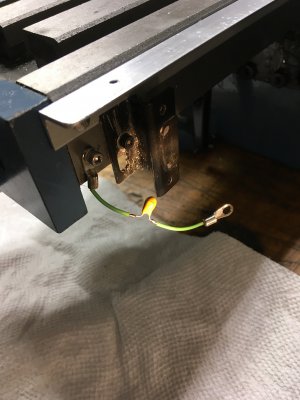I found that hardwiring the scale to the DRO's internal ground, along with soldering 1uF caps across the sensor's Vcc and Ground, worked for me. The sliding contact to the scale doesn't seem to work very well, at least not for aluminum scales. Just the caps have worked for some, it seems to depend on each individual machine the DROs are installed on.
From what I've observed, noise can affect the DRO in two different ways. One is where it gets into the clock and data lines, causing temporary glitches in the display that stabilize after the noise source is turned off. The other way is that it apparently causes the power supply voltage the sensor "sees" to bounce around a lot. When this happens, the displayed position changes and doesn't recover when the noise goes away. My problem seemed to be mostly (but not exclusively) due to the latter issue, hence the added caps between Vcc and Gnd.
Some have suggested putting RC filters on the clock and data lines to filter out the noise, but I think that would be problematic. The display unit generates the clock and the sensor unit generates the data, which is synchronized to the clock signal. If the clock line is filtered, the sensor "sees" a delayed clock, thus delaying its data output; and filtering the data line results in a further-delayed data signal going back to the display. The receiver could miss the data transitions. You could write some code for an Arduino or the like that takes the delays into account, but if I had to go that far I'd think hard about going to a real DRO combo -- magnetic/optical scales + display.


